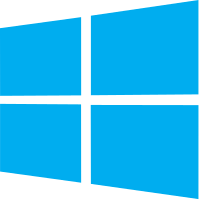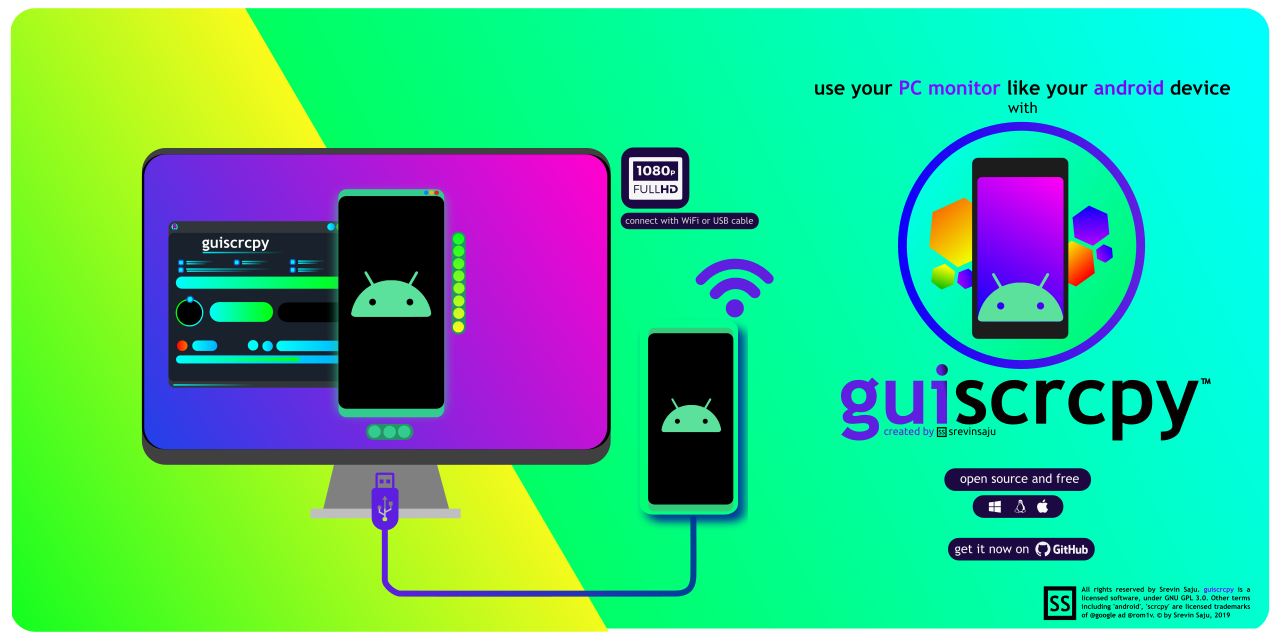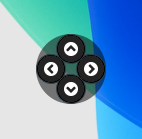guiscrcpy is a multiplatform, ready-to-use GUI layer for Android to PC screen mirroring written in the advancing programming language python3 for the most award winning open-source android screen mirroring system -- scrcpy located on https://github.com/genymobile/scrcpy/ by @rom1v
NOTE: Make sure you enabled adb debugging on your device(s).
| Ultra fast download |
GitHub Release download | Nightly Downloads (bin) | |
|---|---|---|---|
 Windows Windows |
1.11.0 Windows 32/64 bit | 1.10.0 Windows 32/64 bit | |
 Linux Linux |
For faster execution, we recommend the Source code on Linux or 1.10.1 Linux (amd64) | 1.10.0 Linux (amd64) | Binary - Nightly Builds |
- Installation
- Features
- Requirements
- Build
- Where thing go Wrong
- Why guiscrcpy?
- Future Releases
- Support
- Changelog
guiscrcpy can be installed through source code (recommended) or by downloading the release binary (Windows, Linux ~ Nightly Builds).
(Also called Step 0). Put a star on my repo. Gives support to #opensource and me!!
It is the easiest way of installing guiscrcpy.
Just use pip install guiscrcpy
Replace pip with pip3 if python3 is not your default version.
It is always recommended to run guiscrcpy from source due to its flexibility and fast I/O speeds. Thanks to Python's interpreter technology, commands are executed faster than ever. The procedure to install guiscrcpy from source is same for all platform or OSes which support python3.
- Clone the guiscrcpy GitHub repository.
If you have
gitinstalled, you may run this:git clone https://github.com/srevinsaju/guiscrcpy
If you do not have git installed on your system, you may click the drop down menu from Clone this repository > Download Zip or click here.
-
Extract the files to a directory
-
Linux users have a shortcut to do the installation process. Just run
./guiscrcpy-src-installer.sh. It might ask for sudo password to install it to the application menu. You may either deny it or accept it or edit the script file to match your needs. If the script completes successfully, you might be able to runguiscrcpyfrom any directory, and see a Desktop launcher from your Appplication Launcher. You may skip step 4. guiscrcpy is ready to use! -
On Windows, MacOS or Linux, where you didn't run step 3, you should install the dependencies. The dependencies are provided in the requirements.txt file. It is easier to install with
python3 -m pip install -r requirements.txtUse the --user flag to keep the modules limited to the user account. Alternatively, you can performpython3 -m pip install PyQt5 psutil qdarkstyleA dependency that is optional ispystray, which is meant for developers only. -
Fire up guiscrcpy with this terminal command on
- Linux:
guiscrcpyor click theguiscrcpy iconon your desktop launcher! - Windows:
python3 guiscrcpy
- Linux:
NOTE:
(i) Do not use Ctrl+C or Ctrl+Z to stop the program as it might run into an unresponsive window. Alternatively, use the close button on the panels.
(ii) Before running from source, make sure you have scrcpy on your path. You can Google it out, on how to do it. The Windows binary packages scrcpy binaries along with it. Using guiscrcpy-src-installer.sh also does not require you to consult scrcpy on path
For Windows, the executable is compiled into an Installer. Download the Portable file from GitHub or Mega, given in the Downloads section.
You may want to add guiscrcpy to the Start Menu, using Pin to Start button on Windows Explorer Panel.
For Linux, download the latest official guiscrcpy_linux-* release from GitHub or Mega on Downloads section, double click the file, and you are good to go.
As pre-requisite, you should do sudo snap install scrcpy to install the scrcpy engine.
For Arch Linux and derived OSes, a third-party maintainer has released a guiscrcpy-AUR and guiscrcpy-git.
See Arch User Repository
Unfortunately, I do not own a Mac device, and hence cant compile for one, but it is easy to build one. Read the build instruction
guiscrcpy has many features which is very much required for day to day usage for app developers, common users, students, commerce departments, testers, production managers and helpline centres. Its powerful side panels, bottom panels and floating console makes using almost a touch controlled Android device, completely comprehensive on a Desktop, laptop or a multitouch Tablet.
guiscrcpy uses USB or WiFi for screen mirroring. In comparison to other android screen mirroring software, guiscrcpy uses as less as 6 MiB on a RAM*, and has high definition screen quality and latency through USB, more than 16MB/s quality. Using WiFi reduces
It focuses on:
- lightness (native, displays only the device screen)
- performance (30~60fps)
- quality (1920×1080 or above)
- low latency (35~70ms)
- low startup time (~1 second to display the first image)
- non-intrusiveness (nothing is left installed on the device)
~ from scrcpy README
guiscrcpy focuses on:
- independent add on controls
- faster execution (no need to waste time to think; oh, what was the command for changing bitrate, etc.)
- configuration writing
- one handed controls
- easy GUI
All the requirements are the same as that of scrcpy. A copy of the requirements are given below.
The Android device requires at least API 21 (Android 5.0).
Make sure you enabled adb debugging on your device(s).
On some devices, you also need to enable an additional option to control it using keyboard and mouse.
| Feature | guiscrcpy |
other *scrcpy* alternatives |
commercial software |
|---|---|---|---|
| Speed | Faster, as it is independent from scrcpy engine | Mostly integrated into the engine, making a GUI layer (slower) | Contains Ads or is through Internet, (data charges are inclusive) |
| Language | Python | C-alternatives | Binary (unknown) |
| Type | Open source (you can edit them) | Open source | Proprietary |
| Other | Can write configuration file and handle events like swipe up, swipe down, App-switch, volume up | Can handle all events which is using a forked version of scrcpy | Can do everything except swipes and pinches |
| Compatibility (PC) | Windows 7 (32/64) / MacOS / Linux | Windows 7 (32/64) / MacOS / Linux | Windows 7 (32/64) / MacOS / Linux |
| Compatibility (Mobile) | Android 5.0+ (given by scrcpy) | Android 5.0+ | Android 4.4+ |
| Base | scrcpy (original, created by @rom1v | forked scrcpy | no scrcpy |
| Keyboard Shortcuts | All the shortcuts which are mentioned by scrcpy | Unknown | Unknown |
guiscrcpy uses adb to communicate with the device, and adb can [connect] to a
device over TCP/IP:
- Connect the device to the same Wi-Fi as your computer.
- Get your device IP address (in Settings → About phone → Status).
- Open a Command Prompt window in
C:\Program Files\guiscrcpy\. (needed for only wireless connection) - Enable adb over TCP/IP on your device: Type this command
adb tcpip 5555. - Unplug your device.
- Connect to your device: Type this command:
adb connect DEVICE_IP:5555(replaceDEVICE_IP). - Run
guiscrcpyas usual.
It may be useful to decrease the bit-rate and the definition: [connect]: https://developer.android.com/studio/command-line/adb.html#wireless
~ Quoted from scrcpy.
The package includes four parts:
It handles all the pre - runtime features and gives flags to the scrcpy engine. It also includes a configuration writing system, which write the configuration file to the home directory, so guiscrcpy can read the information and run it, without
giving flags quite often.
The toolkit is an independent module, which is in
neither way connected to scrcpy or guiscrcpy, except for launching.
NOTE: See Issues: Unable to drag panel
The bottom_panel is an additional floating windows
that helps to do basic controlling like Home Key, Back Key, Power Key. This include the most important functions, one would like to do with an Android device.
The most important feature of this module, is that it has no interference with the scrcpy SDL layer, and hence maximum speed
NOTE: See Issues: Unable to drag panel
The guiscrcpy v1.11 features a Swipe panel. Controlling a multitouch device like Android devices can be limited with a mouse. To enhance this efficiency, a SwipeUX Panel is added to do common swipes on all four directions
The scrcpy engine, is the classic v1.10 scrcpy, found on scrcpy's github page by @rom1v. On Windows release files, scrcpy, binary executable is also attached to make PATH problems easier to solve. On Linux, scrcpy has to be manually downloaded from snap. The installation script does it automatically for you.
guiscrcpy includes all the shortcuts that scrcpy packages. These are all the keyboard shortcuts
I have Python as a subject for Class XI, so as a part of it's advanced learning experience, and because of my daily use of scrcpy, wanted to integrate GUI into the CLIbased app!! GUI stands for Graphical User Interface, and Py is not inherited from scrcpy but rather from Py for Python
PyQt5psutilqdarkstylepystray(optional, developers)PyAutoGui(optional, developers, Windows only)
-
(Also called Step 0). Put a star on my repo. Gives support to #opensource!!
-
Install python3. If you don't have it install it from Python Software Website or on Linux by
sudo apt install python3.7 -
Clone my git repo. or copy paste this to your bash
git clone https://github.com/srevinsaju/guiscrcpy -
Run the Python Package installer
pipand run the commands belowpython3 -m pip install -r requirements.txt -
So you are all set! Run the program by
python3 guiscrcpy -
Read Known Issues if you fall into some errors.
Surely, guiscrcpy has great scope of improvement. Compared to paid Screen Mirroring software, scrcpy gives a lot of advantages, but my future plans are as follows
Fix HOME_key, BACK_key. (Will have to wait until @rom1v examines my work)Fixed!Add better UI support with adb functions out of scrcpyFixed again!- Support python3.8.
- Add service running indicator
Create pre-built installer and files, Will try fbs build system, after a quite whileFixed!
For Linux operating systems, if python raises Xlib>>ModuleNotFoundError, then run
sudo apt install python3-xlib
sudo apt install python3-qt5
To use toolkit (development, on Linux only), run:
sudo apt install wmctrl xdotool
Some buttons like clipboard, pinch in/out are not enabled. But, however, you may enable it by recompiling the source code. I am looking forward for pinching on Android help / Documentation / links.
According to Issue #4 created by @logix2, regarding some problems in dragging panels in the Linux OS, in this case, using the Meta, Super or Alt keys, to use the Desktop Window Manager functionality in moving the Panel.
Sponsor me or share your ideas, issues with me on github and email srevin03@gmail.com!!
guiscrcpy, on initializing, creates a guiscrcpy.cfg file in
- Windows:
C:\Users\<UserName>\AppData\guiscrcpy.cfg - Linux:
~/.config/guiscrcpy.cfg - Mac and other OSes:
~/guiscrcpy.cfg
A user may create backups of configuration file, or edit them manually. It is created by guiscrcpy and stored in the respective directories. The structure of the .cfg file is not based on structured language, but based on backslash n (new line) in LF and CRLF file type The structure is as given below
the cfg file struct::
-
:bitrate0 [Line 4] -
:dimension0 [Line 5] -
:swtouches0 [Line 6] -
:fullscreen0 [Line 7] -
:dispRO0 [Line 8]
The Line Numbers are based on Python's index numbers, whuch starts from 0 and ends in 8, in this case.
Thanks to all of the developers, testers, friends and family who helped me in this project.
Special thanks to
- @logix2 - Issue #5, #7
- @Strubbl - Issue #8
- Panel icons (home, back, bell, etc. located in
\icons\*) made by Dave Gandy from www.flaticon.com used under Creative Commons 3.0 Unported. The original SVG black work by Dave Gandy has ben re-oriented, flipped or color-changed. The rest of Terms and Conditions put formward by CC-3.0:Unported has been feverently followed by the developer. Icons have been adapeted in all the three windows.
- Added
guiscrcpy-src-installer.shwhich installs guiscrcpy to your path and creates a desktop launcher - Added Swipe UX Windows
The new logo for guiscrcpy has been deployed, licensed under Creative Commons License Attribution 4.0. A comparison between old and new.
The new UI aims for faster ergonomics and consumer oriented. Individual modules, now are separate from scrcpy executable to provide speed to the mirroring system. The new UI also looks way better than the old one ;)
- Fixed many bugs
- Better UI, based on Material principles
- Switched to dark theme, thanks to
qdarkstyle - Faster
scrcpyloading. Re-convertedStartScrcpyintoMyAppclass.QThreadis not very fast, as it is said to be. - Configuration has been updated to add
Keep Display Off - Added Orientation change command (potrait / landscape)
- Added user configuration file write to home directory on static line system. Users now automatically save theit information into the
.cfg file - Separated main controls from subsidiary controls. Linear layout and horizontal layout are separate.
- Users can now perform top to bottom or bottom to top swipe with notification buttons,
- Button utility is mentioned in tooltip
- Added Reset button to reset user config to defaults.
- Fixed QProgressBar blocking mainthread.
- Minor Fixes
25062019 2159
- MEGA CHANGE :: Migrated from
PyQt4toPyQt5due to late realization that PyQt4 support for Windows is unfortunately discontinued. mainwindow.ui>> xml parsed file loaded in uic loader has been compiled tomainui.pyas UI- toolkit.py is deprecated. toolkit class is restructured into mainwindow class with multiprocesing.
- After
PyQt5update, GTK-LTK-KDE no longer raises pixmap errors - Unreleased .ui files for Build. Only dependencies for release are png pixmap files
23062018 1615 GMT+300
- Dumped terminal QTextEdit for multiprocessing to prevent QThread hang.
- Restructured StartScrcpy Class as two threads.
22062019 1948 GMT+3
- Fixed GUI hang (issue reported by @rom1v)
(code has been restructured. the old code is placed in
/backup/folder asmain 1.9.2.py. But however, terminal ui QTextEdit is not functional.
21062019 2000 GMT+3
- Added GUIScrcpy icon
- Added pixmap icons
- Added check scrcpy process running or not
- Added GUIScrcpy Toolkit Experimental Support ###1.9.1
- Initial Build :)

















